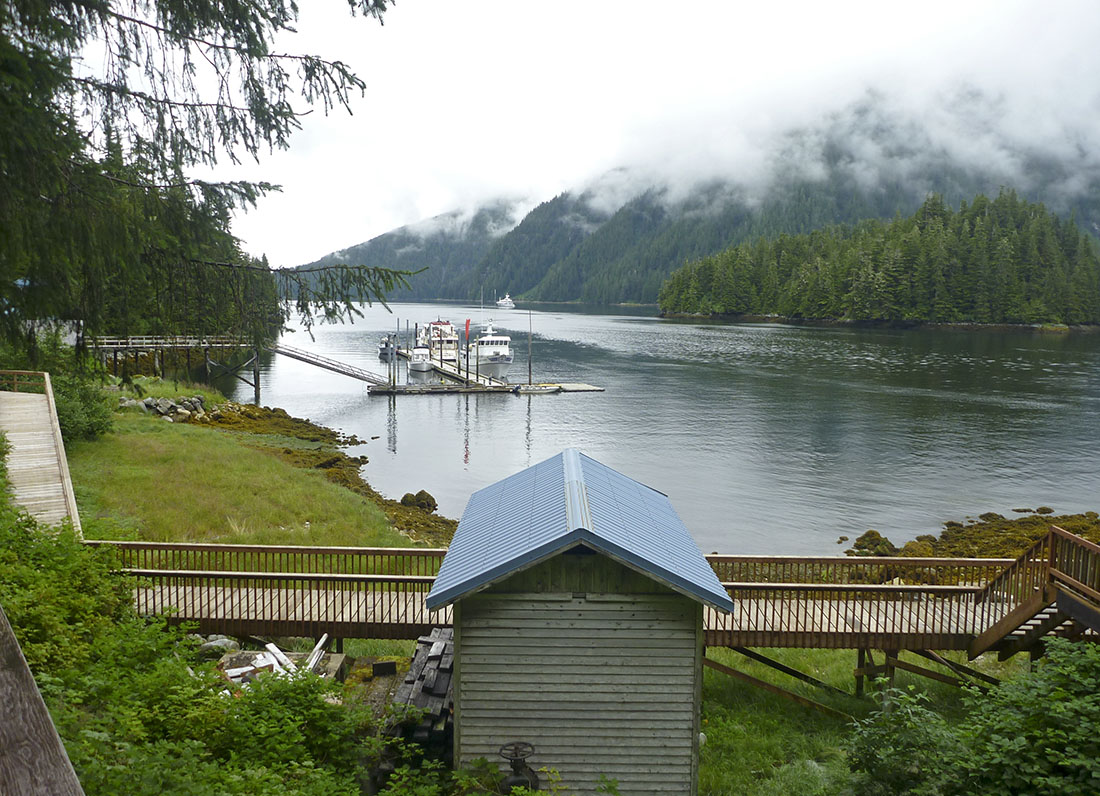
A proposed hatchery in a local tourist destination and fishing haven has some Sitkans and residents of up in arms.
Juneau businessman Dale Young has tried unsuccessfully twice before to win a hatchery permit in the bay, with similar public reaction.
Baranof Warm Springs is a quiet bay tucked away on the eastern side of Baranof Island.
It’s home to about 11 cabins, a field station for the Alaska Whale Foundation, and, most notably, sulfur hot springs that are a mecca for people around Southeast.
Jim Brennan has been coming to the warm springs since he was a kid.
“I think I was first there when I was either 5 or 6 years old,” Brennan says. “That’s where I learned to trout fish on Baranof Lake. As you can see by the color of my hair, that’s quite a few years.”
Brennan’s family has owned a cabin in Baranof Warm Springs since the 1950s.
He and other residents are concerned because their quiet bay could be the site of a new hatchery.
“It’ll completely distort and to my mind destroy the special quality of Baranof that is there that attracts so many visitors,” Brennan said.
Young put forth the proposal for the private, nonprofit hatchery, the Sustainable Salmon Institute, last November.
This is his third permit application in recent years.
Young owns property in Warm Springs on the north side of the bay.
The Alaska Department of Fish and Game identified the area as a prime location for a Chinook hatchery in the 1980s because of the large volume of water, but the project wasn’t pursued.
Young applied for a hatchery permit in 2011 and again in 2012, but his application was denied both times.
“It’s just untouched pristine old growth forest, and muskeg habitat. It’s just a remarkable place that’s really unlike anywhere else,” said Andy Szabo, director and research biologist with the Alaska Whale Foundation.
Szabo doesn’t know exactly how a hatchery would impact the ecosystem, but it would be substantial.
“No question it’s going to bring noise pollution. It’s going to bring a lot of people,” Szabo said. “We’re quite concerned about what it’s going to do to the number of predators, primarily grizzly bears that are going to come to the area. We have no idea what the cascading effects of that will be.”
Several thousand visit Baranof Warm Springs each year. And it’s an important area for scientific research in Southeast Alaska.
Szabo said it is precisely that pristine nature that makes it important to researchers.
“Setting up these monitoring stations in pristine environments allows us to create a baseline to see how ecosystems are supposed to be functioning.”
The new hatchery would be only 11 miles away from Hidden Falls, a hatchery built by the state in 1978 and now operated by the Northern Southeast Regional Aquaculture Association.
The hatchery is one of several in the area that has, in recent years, seen major problems with whale predation.
Association general general Steve Reifenstuhl said it’s really hurt the hatchery’s margins and a new hatchery would face big challenges starting out.
“It’s a grim situation,” Reifenstuhl said. “It’s a $2 million operational cost for that facility. We’re not returning that value to the common property fisheries. We’re scrambling hard to try and figure this out before we have to close the doors.”
Szabo said the idea of a second hatchery so close to one that’s already having problems doesn’t make sense.
“One needs to only sit on our dock in May, you can literally watch humpback whales feeding on hatchery reared salmon at your feet,” Szabo said. “It’s pretty amazing to watch but again, the idea that someone would propose to establish another hatchery when the one 8 miles away seems to be suffering, seems very short sighted.”
Another concern? Bears.
Hatcheries attract a lot of them. Reifenstuhl said local cruise ship companies even stop in Hidden Falls now so tourists can catch a glimpse.
“It’d be like Jurassic Park but with bears,” Brennan said. He thinks bears in high numbers like in Port Armstrong and Hidden Falls could be a much bigger issue in a residential area like Warm Springs Bay.
“Both of those are pure hatchery bays,” he said. “Unlike Baranof Warm Springs where there’s, number one, a village with residents, and number two a lot of human traffic coming in on boats. And the potential for conflict is unimaginable, really.”
The movement of water also is key to making a hatchery run smoothly. Brennan said it would take too much.
“Twenty cubic feet per second that he would be drawing down. It would at times, based on stream flow records, it would draw the river down to levels that would threaten if not destroy the cutthroat trout habitat.”
Young who declined comment.
In 2012, when Young last sought a permit, he said if the facility was built it would be the beginning of a valuable research and enhancement tool that will be able to be used far into the future.
